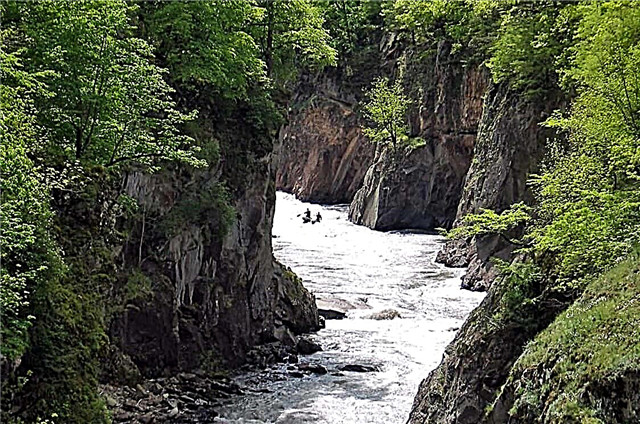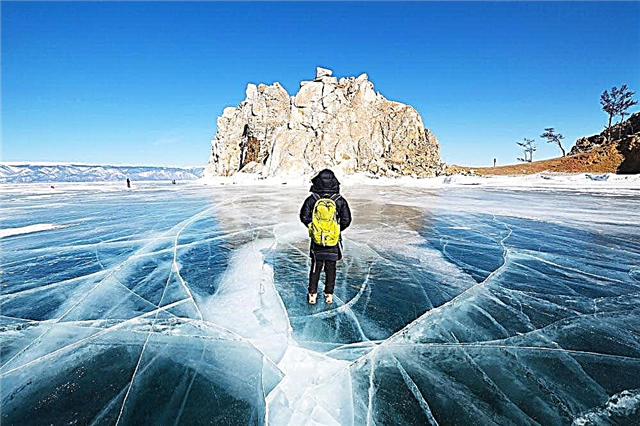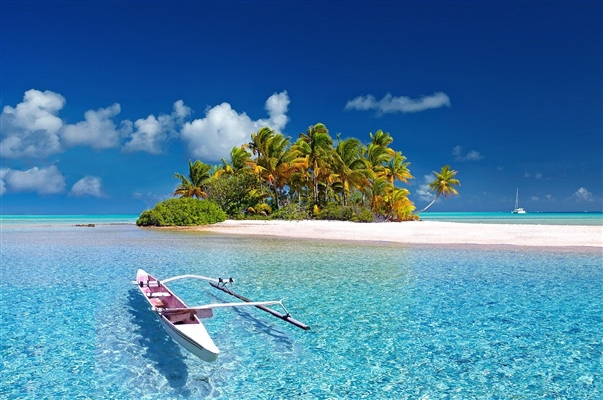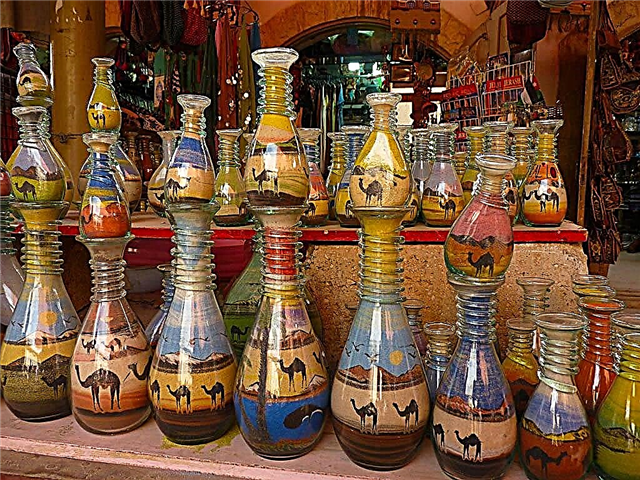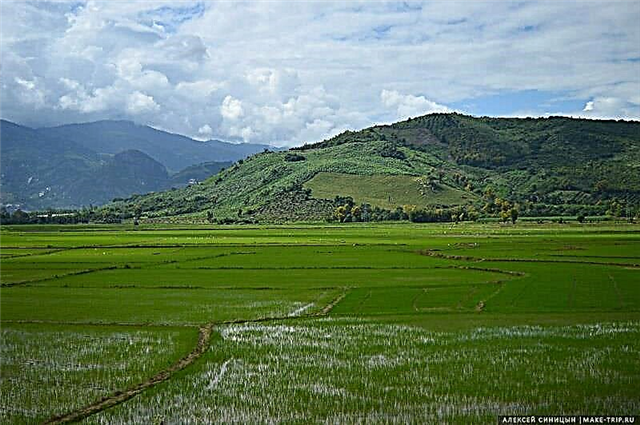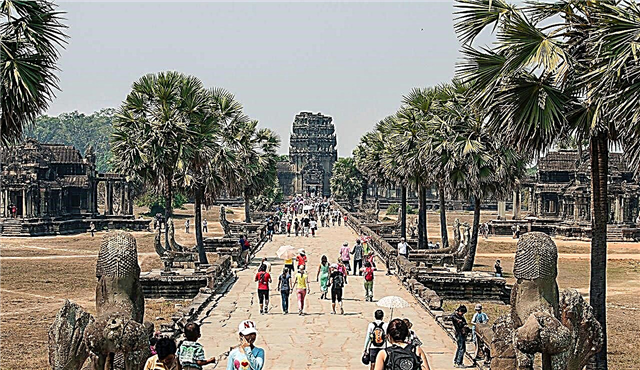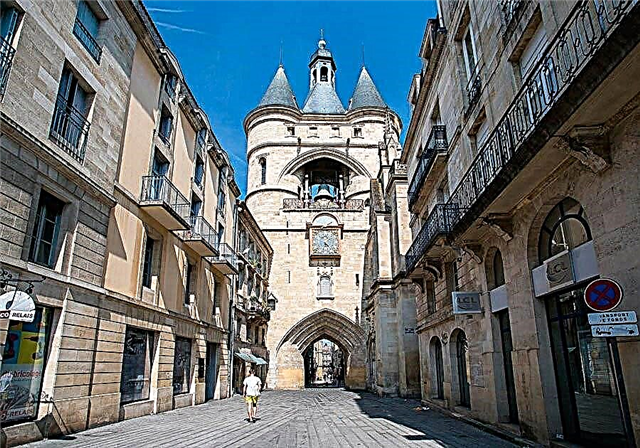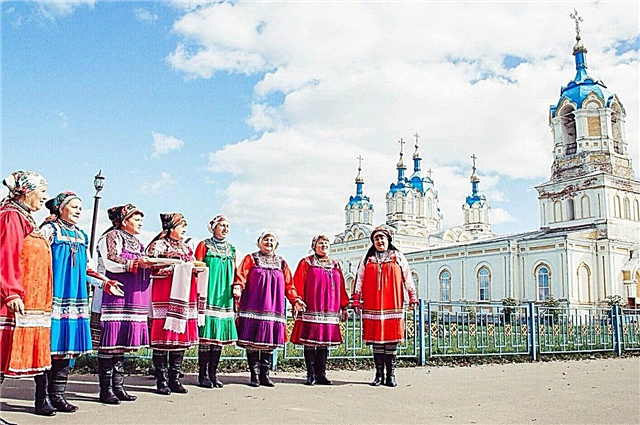Mordovia is proud of all the peoples who have ever inhabited it. The republic scrupulously collects everything related to national identity, but at the same time emphasizes the inextricable connection with the rest of Russia. Orthodox churches and monasteries are a great opportunity for pilgrims to visit holy places, as well as travel all over Mordovia.
Many sights are concentrated in Saransk. The most demanding tourist will be able to occupy himself here: an art gallery, a theater, walking areas, monuments - which is not available in the capital of the republic. Another direction is travel to the bosom of nature. Smolny National Park, lakes and rivers, as well as forests of all types are ideal for ecotourism lovers.
The most interesting and beautiful places in the region
List, photos with names and descriptions of the best attractions!
Cathedral of St. Theodore Ushakov
Built in Saransk in the early 2000s. It is a cathedral and replaced the previous temple with the same status, since it has a large capacity. Bears the name of the canonized admiral. The cathedral was consecrated by Patriarch Alexy II. The architectural style is Empire, and 12 gilded domes, cast according to the technologies of previous years, belong to the neo-Byzantine style. The iconostasis was made in Saratov from gilded wood.

Old Terizmorga
The village has become a concentration of Moksha culture and traditions. A festival is held with the participation of the Finno-Ugric peoples. There is a cultural center, St. Nicholas Church, an ethnographic museum. Master classes are held, including teaching how to weave from beads. Tourists are offered to taste traditional Mokshan cuisine - millet pancakes and pose. The local choir, which has existed since 1957, performs throughout the country and abroad.

Mordovia reserve
It was founded in 1936 on the territory of more than 32 thousand hectares of the Temnikovsky district. In addition to getting to know nature, you should take a look around the local museum and visitor center. The reserve offers visitors 8 ecological tours for every taste. You need to get a special permit before visiting this place. The hotel is open all year round. You can also stop at one of the cordons.

Insar St. Olginsky Monastery
It arose on the basis of a small hotel for nuns, founded in the 80s of the XIX century. In 1900, a nearby temple was consecrated. It has 12 chapters, all small. The purpose of this architecture is to reduce the focus on a bulky facade. In Soviet times, it housed a museum of local lore. Since 1988, the monastery began to revive. At the time of restoration, 30 sisters lived in the monastery.

Klyuchevskaya desert
Located near the border with the Chuvash Republic. The monastery arose in the 18th century and dates back to the appearance of the icon at the holy source. The spring was popular even during the years of desolation of the monastery. It began to be restored in the mid-90s of the last century. The old buildings were restored, a new bell tower, baths with a chapel at the source and a hotel for pilgrims were built.

Lake Inerka
It is about 70 km from Saransk. The area is 44 hectares, it has an elongated shape. The water is clear with a bluish tint for most of the year. Birds nest and water lilies grow on the shores. A little further there are forests of several types: coniferous, deciduous, birch. In the area of the lake, off-road races, fishing competitions, concerts, beach parties and other events are held.

Smolny National Park
It was founded in 1995 and covers an area of 35.5 thousand hectares on the left bank of the Alatyr River. Rare birds nest in the forest and on the floodplain; this area is one of the most important for bird watchers in the world. The forests are both mixed and pine and deciduous. The meadows are mostly floodplain. The national park has an educational function, so there are eco-routes and excursions.

Paigarm Paraskevo-Ascension Monastery
The convent was founded in 1865. It grew rapidly, with workshops and an orphanage working there. The main shrine is the icon of the Holy Martyr Paraskeva, which contains a particle of her relics. Two cathedrals, two churches and three chapels have been built on the territory. Each building has its own characteristics, but the ensemble looks like a single whole. Nearby: a spring with a chapel and a bathhouse and a hotel for pilgrims.

Sanaksar Monastery
Built in the Temnikovsky district in the middle of the 17th century. For some time the male abode was considered one of the spiritual centers of the country. After 60 years of desolation, it began to recover in 1991. A small sawmill and a candle shop were opened. In the forest nearby is the holy spring of the Monk Theodore. The territory has been ennobled, baths and convenient access to the water have been built.

Makarovsky St. John the Theological Monastery
Founded in the mid-90s of the last century, while most of the temples and other buildings were built much earlier. They have been restored and supplemented with the necessary modern details. There was a churchyard here in the 18th century. There are a number of architectural features. For example, the bell tower is built into the fence along with the towers. It is the residence of the local metropolitan. The Synodal Department for Youth Affairs operates on the basis of the monastery.

Ichalkovsky stud farm
Pedigree stud farm No. 27 "Mordovsky" has been located in the village of Obrochnoye since 1778. From Saransk - 60 km. One of the largest stud farms in the Volga region. In addition to purebred horses from different countries, they work here with a unique breed - the Moksha trotter. The visit program includes acquaintance with history, visiting stables, horseback riding. Tourists are welcomed all year round and every day, except Mondays.

Stadium "Mordovia Arena"
Built in Saransk for the 2018 FIFA World Cup, which took place in Russia. It has a category 4 according to the UEFA classification. The capacity is from 30 thousand to more than 43 thousand people. Excellent visibility from anywhere in the stadium. Modern in technical terms, which makes the matches more spectacular, and the work of journalists more convenient. Suitable for people with disabilities.

John the Theological Church
The oldest building in Saransk, which appeared on the site of its wooden predecessor in 1693. Repeatedly rebuilt and changed, there were limits, and then the bell tower. The church was closed in the 30s of the last century, but services began again in the 40s. For some time it had the status of a cathedral. The main shrine is a copy of the miraculous Vladimir Icon of the Mother of God.

Mordovian Museum of Local Lore
Based in Saransk since 1918. Since 2017, the museum has a new building. Funds - more than 200 thousand units. Divided into three sections: history, modern history and nature. The first two mentions important events in the Russian and world arena, and their reflection in Mordovian life, and also mentions the cultural features of the region. The third is the most visited. Here the natural complexes of the republic have been recreated in miniature.

Museum of Mordovian Folk Culture
In 1999, a building in Saransk, formerly owned by a merchant, was allocated for it. Exhibits: national costumes, household items, folk art, etc. Funds - about 3.5 thousand units. They collect stories about holidays, legends of the peoples of the republic, record traditions and hold events with a special flavor. The goal is to prevent new generations from forgetting their roots.

Botanical Garden named after V. N. Rzhavitin
Named after its creator. It has been based on the basis of the Faculty of Biology of the Mordovian State University since 1960. The area is just over 35 hectares. The total number of species is 1700. Thanks to the botanical garden in Saransk, miniature natural zones, characteristic of different parts of the planet, have appeared.In addition, samples of local vegetation have been collected here. Open to the public from May to October.

Museum of Fine Arts named after S. D. Erzya
Has been in Saransk since 1941. Named after the sculptor and owns a large collection of his work. In addition, the collection includes paintings, graphics, arts and crafts, both by world-renowned masters, as well as local artists. Some of the exhibitions are supplemented with multimedia content. The museum has a cinema, a lecture hall, a souvenir shop and a cafe.

Museum and Ethnographic Complex "Mordovskoe Podvorie"
The opening took place in 2012. Considering that the complex is located in Saransk, it can be called unique: it fits well into the urban environment. Buildings typical for the peoples inhabiting the republic have been recreated on the spacious territory. They are different in style and purpose. Green areas are laid out, paths are laid, there are fountains and mini-reservoirs. Before visiting, you need to clarify the opening hours.

Musical theater named after I. M. Yaushev
It was founded in 1935 in Saransk, and received its current name in 1994. Named after the Honored Artist of the RSFSR, who developed opera in the region. The theater moved to a new building in 2011. The troupe puts on performances based on classical works and also uses materials from local authors and composers. Touring groups and participants of festivals periodically appear on the stage. The theater has a cafe "Mask".

Monument "Forever with Russia"
Installed in Saransk on the Friendship of Peoples Square in 1986. On a stele towering over the surroundings, there are two female figures. They are wearing national costumes symbolizing Russia and Mordovia. The women are holding one large wheat spikelet. Sculptor - Brodsky, material - bronze. In 2012, a fountain complex appeared next to the monument, complementing the overall picture.

Monument to the stratonauts in Saransk
Installed in 1963 and dedicated to everyone who was able to reach the stratosphere. The reason for its creation was the tragedy of 1934, when a failure occurred during the descent, and the stratonauts died, and their module fell on the territory of Mordovia. The monument is a tall stele, at the top of which is a man in a special helmet, with his chest outstretched and as if ready to fly.

Park of Culture and Rest named after A.S. Pushkin
Its history began in the 19th century with the desire to create a green zone on an unnamed square in Saransk, namely to plant trees. The final design of the territory into the park took place at the beginning of the 20th century. Notable places: a Ferris wheel, a monument to Ushakov, a special flower calendar, Pushkin made of plants, a zoo and so on. There is a comfortable hotel and cafe nearby.

National Library named after A. Pushkin
The largest library of the republic is located in Saransk. It opened in 1899. Funds - over a million copies. At the time of creation, a little more than 300 books were received here. The library looked more like a reading room, and then changed direction, gradually expanding. Now one copy of each edition issued in Mordovia gets into the library's repository.

Museum of A.I. Polezhaev
Works since 2001 in Saransk and is dedicated to the local poet. Three halls are dedicated directly to Polezhaev, his work, life hobbies, the writer's personal belongings are kept here. The fourth room is dedicated to a collection dedicated to other local authors of various sizes. And the fifth is a lecture hall and sometimes a discussion club. Like most museums, it is closed on Mondays.

Park of Culture and Rest of the Leninsky District
It has been located in Saransk since 1978; the locals, in addition to the official name, use one more thing - "Ogarevsky". The area is about 150 hectares, most of which is a forest belt. It is cool here in summer even in the heat, vacationers are accommodated under the shade of trees and near small bodies of water. Skiing is popular in winter. There are rental points for the necessary equipment on the territory. One of the symbols - the Ferris wheel - had to be removed due to dilapidation.

Victory Square in Saransk
The current name has been assigned to it since 1972. Sightseeing: the Alexander Nevsky chapel, the Escape from Hell memorial sign, the monument to the soldiers-natives of Mordovia who fell during the Great Patriotic War, the monument to the heroes of the First World War, the eternal flame, the Memorial Museum of Military and Labor Feat of 1941-1945, the monument to the soldiers-internationalists. All sorts of events are held on the square, including those related to May 9.

Museum of the locomotive depot in Ruzayevka
It has existed for over 40 years, but in different forms. Initially, it was a small room with memorabilia, gradually the museum grew and received its current status. In 2006, it was redesigned, the collection was put in order, consisting mostly of documentary evidence, photos and other original exhibits. Sometimes the funds are replenished by ordinary citizens who bring to the museum what they think is appropriate.

House-Museum "Ethno-kudo" named after V. Romashkin
Opened in 2006 in the village of Podlesnaya Tavla. Dedicated to the folklorist Romashkin and his many years of work. Some of the rooms are reserved for the personal belongings of the researcher, who was also the founder of the Torama folk group, and some for the ethno-collection. The museum hosts an annual festival where songs of local peoples are performed. The exposition can be viewed all year round, with the exception of weekends - Mondays.

House-Museum of F.V. Sychkov
It has been located in the village of Kochelaevo since 1970. The exposition consists of the artist's personal belongings, attributes and decoration typical of the houses of that time, as well as the master's works. All rooms were restored according to the memories of Sychkov's wife, some household items were provided by his family. A separate collection includes the awards received by Fyodor Vasilyevich, including those for the war period.

Moksha river
The length is 656 km, half of the total length is within Mordovia. The name of the river is presumably derived from one of the national groups that have inhabited this area since ancient times. Calm waters allow even novice tourists to travel along the river. Along the banks there are tourist centers, children's camps, a sanatorium of the same name. In some settlements, for example, in Krasnoslobodsk, beaches are equipped.


